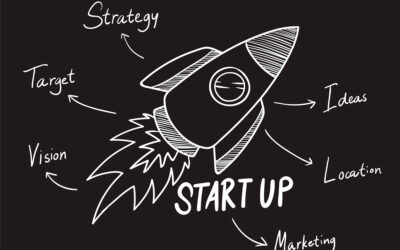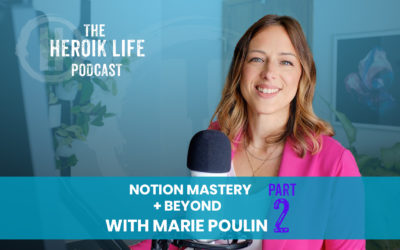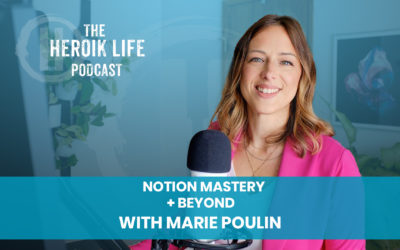Once upon a time, you could simply describe to a department or team, the work that had to be done and how to do it. The approach of the Industrial Age, was deploy a narrowly-focused system that effectively does X. This worked with the expectations of its time, up to a point. Fast forward to the Information Age and very quickly, the physical, narrow approach to producing widgets (hard or soft) is increasingly inadequate for today’s marketplace.
The New Point of Consumption- Our Minds
The setting of consumption – or where products are really consumed has shifted from our hands to our brains. These days, brands and products are unwrapped, jumping from screen and print, to be decoded and processed in our minds. Media of all types (software, video games, books, ebooks, music, etc.) has steadily focused on conveying vast amounts of visual, persistent and interactive information to be consumed by our brains. Our perceptions, thoughts and feelings that shaped these experiences, have changed the way we buy, sell, and work. It has contributed to a cultural shift that is focused more and more on the experience of interacting with a product, brand or service.
Notice I didn’t pawn this shift off to a specific generation. The little known, less sexy truth of the matter is that so many generations are high tech, connected, informed, early adopters, that the old demographic stereotypes don’t hold water. If you don’t believe me, I refer you to Neilson’s market research PRIZM segments. What you’ll find is that the kiddies aren’t the only connected, high tech junkies who are expecting more from brands. It is a societal trend.
Putting the Breaks on Information Overload
Along with the experiencial focus, we are beginning to understand the impact of information overload and re-evaluate the importance of our consumptive activities. Some credit for the increased scrutiny and focus on the experiencial value is also due to the economic crisis and clear and present global economy.Even small businesses are competing with businesses on other continents. Mom & Pop online retailers must reconcile themselves in the world of experiences from the likes of Amazon, Google, and others. Being online was enough to thrive in the late 90’s and early 2000’s. Now businesses must provide more and create experiences to build better relationships with their customers.
A few examples of the evolution from simply presenting information to focusing on experience:
- Netflix & Amazon Prime Subscriptions are up. Great affordable experiences that put consumers in the driving seat (and thereby delivering great value of convenience)
- Cable subscriptions are down; I’m not counting Internet Bundles- as people need the web and will happily receive free cable with it. That is at least the perception created by bundling.
- Apple’s influence on the world- shaping business and consumer expectations of product and experience design.
- Old tech titans falling apart – Dell, HP, Yahoo, and to a degree AOL; those that caught the wave of change early; but missed (or misread) the trend.
For the Enterprise world, collecting and consuming raw data, buying into the hype of any hopeful medium without an being able to effectively interpret, validate or act upon it has lead to precious wasted Billions. That’s Billions with a “B”.
- Big brands retracting from Facebook; GM failing to see ROI – Note: don’t confuse Ad revenue for Facebook with ROI for Brands.
- Print publications converting to web and imploding; discovering the value of online advertising to be 1/14 of print impressions.
- Despite analyst evaluations and research studies, an overwhelming majority of recommendations and analyses just plain fail to be consistently accurate- and we keep listening.
Get Your Back Up Off The Wall
It turns out, it does not always pay to play to your strengths. Crunching data (especially when marketed as business intelligence) has been a proclaimed strength of many a large enterprise. The over-consumption of data is based on more data = better results. Your math skills do not help you score a slow dance with the Prom Queen. All of that “intelligence” did not bring brands closer to their customers. Big brands will have to get their backs off the wall and on the dance floor. This means the uncomfortable risk of engaging customers with imperfect information and focusing on authenticity and brand narrative to attract customers and refine the direction.
This will actually amount to less financial risk on the whole, provided you are attentive to feedback you receive and pivoting on lessons learned. Investing in authenticity, boosting your brand confidence and positioning requires less effort, energy and dollars than following the vanilla recommendations from groups who consistently get it wrong. This can take many forms that scale for any business size. Taking reversible position in trying something new, by stepping out of organization with new programs can bring valuable feedback that is more reliable than the statistical models built on thousands of assumptions on top of assumptions about customers. It’s time to build a pilot program to check and see the signal to noise ratio of the numbers you’ve been crunching.
@ the Workplace
The old means of effectively reaching an audience or motivating high performance inside an organization have changed dramatically in the past few years. If you’ve picked up a Harvard Business Review or MIT Sloan Management Review in the past few years, you’re probably familiar with terms like adaptable mindset, new media, experience design, soft infrastructure and the growing demand for interdisciplinary skills. For management and leadership, this is the year of the Samurai; the interdisciplinary master of the traditional and innovative.
Soft Infrastructure & Experience Design
Goal setting and process design in the modern age have to account for a less than perfectly motivated user. In the past,
Old Design Approach: Build a system that sends the latest information to the customer support team to relay to customers.
Old Assumptions: This is a linear request. If the information is relayed in a legible way it is 100% successful. Employees are perfectly and fully motivated to perform every task. Every task is treated with an equal level of high enthusiasm. Therefore: They will do it and do it well.
Old Mindset Meets User in 21st Century: The Intranet stinks, communication software is clunky and frustrating. Employee proficiency is down, motivation down, displaced aggression towards customers is up.
New Design Mindset: Build a system that gets employees excited about sharing information that will help customers solve their problems.
New Assumptions: It is the role of the design team to create an experience through this solution that motivates employees to enjoy sharing information with customers. The information and how it’s relayed between customer service and the customers must not only be enjoyable and helpful to the customer but exchanged in such a way that is enjoyable for all parties and supportive of the brand values.
Old Tech heads cry foul when asked to do qualitative design work that involves understanding emotional constraints and requirements. The reality is that these considerations are an absolute requirement and it requires a team with interdisciplinary skills ranging from many avenues; the technical, behavioral, social, marketing, strategic and so on. Technical teams can’t get-away with being anti-social and must demonstrate a qualitative concern and connection based on shared values and goals of the users and end benificiaries (customers).
Welcome to the new world of soft infrastructure. Without the presence of cultural and human bits in the design and deployment of internal tools and processes, the enterprise will continue wrestle to produce amazing brand experiences. That’s not to say amazing experiences won’t happen through a brand’s product. Rather, when the customer begins to interact with the other, older parts of the organization, the relationship may be strained. This is true for employees as well.
Internal teams don’t exist in a vaccuum, they too are consumers of internal products, systems and tools. They too have expectations for employers interested in high performance to build better tools, system, and even culture. If your team does not see a consistency between the brands espoused values and external AND internal practices, this leads to lower motivation and lower performance. Authenticity is a money saver and money maker.
Welcome to the No-Bull Rodeo
Soft Infrastructure- company culture- we’re talking the real water cooler stuff, not the talking points in press releases that nobody buys. Few organizations have it. Soft Infrastructure, the authentic culture, is the immune system of the company. It helps the company ward off bullshit, in practice, partnership and product. It helps boost the strength and capability of the company as a whole and allows it to face adverse conditions with greater resilience.
A Few Tips & Considerations:
1. Attempting to pivot as an Enterprise (even a fortune 100 high-tech company) that is built largely on the premise and buckets of the Industrial Model, is like hoping to harpoon and ride a whale with a toothpick and dental floss. Mentor the young fools (myself included) brave enough to try to do so.
2. Get Heroik-Start an Interdisciplinary Innovation Lab yesterday. It’s time to build your growth engine for the world of today as well as the world of tomorrow. Bring your top talent and brightest minds to form a new breed of business hero; a hybrid. Welcome to Warrior Camp & the Samurai Factory
“If I had your $3,000 dollar suit and billion dollar roledex I could rule the world.” – Young Buck
“If I had your new ideas and new media skillset we could expand our empire.” – Old Bull
3. Make both camps prove it and help them refine each other while creating great experiences for your organization. Don’t know where to start? Contact me, leave a comment or visit www.getheroik.com. We create cross generational, interdisciplinary experiences for teams like yours.
4. Cultivate an internal interdisciplinary skills- A few areas of study to consider:
- Experience Design- Frame organizational goals in terms of the experience. Design to encourage the desired experience and get more positive outcomes.
- Cognitive Neuroscience – Pay attention to the brain. This is great for managing internal teams as well as understanding customers.
- Behavioral Economics – The study of what drives us to buy
- Game Theory and Gamification – Learn how to frame experiences to make them more enjoyable, especially decisions leading up to purchase events.
- Marketing – it’s not just for marketers. It’s for everyone.
- New Media Creation and Visual Communication- Just as everyone is expected to type, they should also be able to convey ideas visually
- Bootstrapping – Every single department should study the art of resilient adaptation and worst case scenario survival. Adapt and evolve.
Final Note: In 2008 Autodesk did a study to determine what the brain perceives as valuable. In their study, there were 3 very clear factors; what is visual, persistent and interactive. I refer to this research quite a bit because it’s concise, clear and a major area of my study and work. If you focus more on these 3, they can guide your study and practice to better outcomes.
As long as this post is- I love to interact with you. Please share your thoughts in the comments.




0 Comments